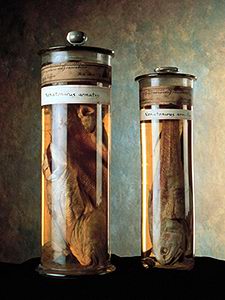Collecting and society
Value
Changing values
Collecting is part of human nature, and has occurred across a range of cultures through history. For the collections held in The Natural History Museum, ideas about their value has changed over time.
Intellectual values
The Museum's collections are an intellectual resource. Each specimen is a marriage of data and natural object, and is placed in the collection with reference to its similarity to other specimens.

The scale of the collections means that we can make comparisons across a large number of specimens. We vigorously develop the collections, adding thousands of specimens to them each year. This maintains and enhances their use as a powerful knowledge resource.
We vigorously develop the collections, adding thousands of specimens to them each year. This maintains and enhances their use as a powerful knowledge resource.
Learn more about:
 |
Worldwide value
The knowledge held here is used by researchers globally. In turn, this generates new knowledge and, indeed, often new collections. |
 |
New DNA collection
For example, we have begun making a DNA collection, freezing pieces of animal and plant tissue. |
Heritage value
The collections are part of our global heritage. Collections made by some of the UK's most famous explorers and scientists are kept in the Museum. These include:
 |
 |
 |
|
 |
 |
||
 |
 |
||